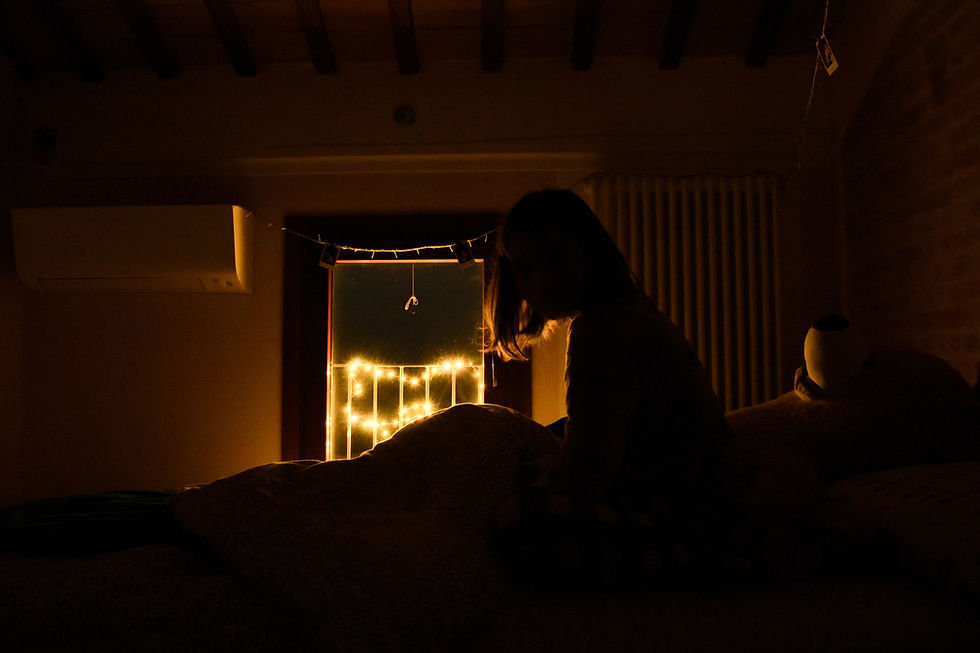Sleep Restriction Therapy: The Counterintuitive Cure for Insomnia
- Matthew Green

- May 11
- 3 min read
When struggling with chronic insomnia, many individuals instinctively extend their time in bed, hoping to capture more rest. However, this approach often exacerbates the problem, leading to fragmented sleep and increased anxiety.
Enter Sleep Restriction Therapy (SRT): a structured, evidence-based method that reduces time in bed to enhance sleep efficiency and consolidate rest.

Understanding Sleep Restriction Therapy
Sleep Restriction Therapy is a behavioural technique designed to align the time spent in bed with actual sleep duration. By limiting time in bed, SRT increases the homeostatic drive to sleep, thereby promoting deeper and more restorative sleep cycles.
This method is a core component of Cognitive Behavioural Therapy for Insomnia (CBT-I), which is recommended by the National Institute for Health and Care Excellence (NICE) as the first-line treatment for chronic insomnia.
The therapy involves:
Baseline Assessment: Keeping a sleep diary for 1–2 weeks to determine average total sleep time.
Setting a Fixed Wake Time: Establishing a consistent wake-up time, regardless of sleep duration.
Calculating Bedtime: Subtracting the average sleep time from the fixed wake-up time to determine bedtime.
Adjusting Time in Bed: Gradually increasing time in bed by 15–30 minutes once sleep efficiency exceeds 85%.
It's important to note that the minimum time in bed should not be less than 5.5 hours, even if the average sleep time is shorter. (Stanford Health Care)
The Science Behind SRT
SRT operates on the principle of sleep efficiency—the ratio of total sleep time to time spent in bed. By restricting time in bed, individuals build up sleep pressure, leading to quicker sleep onset and fewer nocturnal awakenings.
A study published in Sleep demonstrated that participants undergoing SRT experienced significant improvements in sleep latency, total sleep time, and sleep efficiency. These benefits were maintained at a 36-week follow-up, indicating the long-term efficacy of the therapy.
Speaking to Good Housekeeping, Ellen Wermter, a board-certified Family Nurse Practitioner and behavioural sleep medicine specialist with the Better Sleep Council, explained:
“The goal of sleep restriction therapy, which is also sometimes called ‘sleep rescheduling,’ is to better match your time in bed with your total sleep time, which is known as sleep efficiency. Ideally you should be spending around 85% of your time in bed asleep"
Potential Challenges and Considerations
While SRT is effective, it can be challenging, especially during the initial stages. Common side effects include daytime sleepiness, irritability, and reduced concentration. Therefore, individuals operating heavy machinery or driving should exercise caution.
SRT may not be suitable for everyone. Contraindications include:
Bipolar Disorder: Risk of triggering manic episodes.
Seizure Disorders: Increased risk due to sleep deprivation.
Sleep Apnoea: Underlying conditions may be exacerbated.
In such cases, alternative treatments or modifications to the therapy should be considered.
Accessing SRT in the UK
In the UK, SRT is available through various channels:
NHS Services: CBT-I, including SRT, is offered through NHS sleep clinics. However, access may require a referral from a General Practitioner (GP).
Digital Platforms: Sleepio, a digital CBT-I programme, has been endorsed by NICE and is available in some NHS regions.
Private Therapy: Accredited therapists offer CBT-I services, including SRT, with sessions typically ranging from £50 to £120.
Implementing SRT at Home
For those considering SRT independently, the following steps are recommended:
Maintain a Sleep Diary: Record sleep patterns for 1–2 weeks to determine average sleep duration.
Set a Consistent Wake Time: Choose a wake-up time and adhere to it daily.
Determine Bedtime: Subtract the average sleep time from the wake-up time to establish bedtime.
Monitor Progress: Adjust time in bed based on improvements in sleep efficiency.
It's crucial to avoid naps during the day and to get out of bed if unable to sleep within 15–20 minutes. Consistency and patience are key to the success of SRT.
Conclusion
Sleep Restriction Therapy offers a structured and effective approach to managing chronic insomnia. By aligning time in bed with actual sleep duration, individuals can enhance sleep efficiency and overall sleep quality. While the initial stages may be challenging, the long-term benefits make SRT a valuable tool in the treatment of insomnia.
Note: This article is for informational purposes only and does not constitute medical advice. Always consult a healthcare professional before starting any new treatment.



Comments